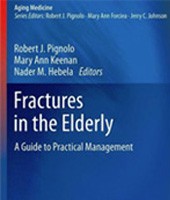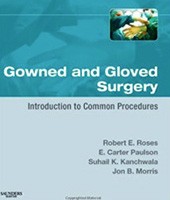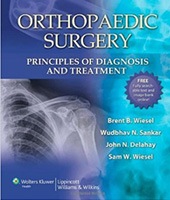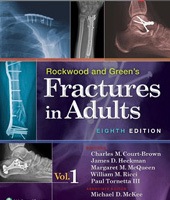
J. Stuart Melvin M.D.
Fellowship-Trained Orthopaedic Trauma Surgeon
Dr. Melvin completed an Orthopaedic Trauma Fellowship at the renowned Carolinas Medical Center, focusing on the treatment of complex upper and lower extremity fractures.
-
General Fracture Info
A bone fracture is a medical condition in which a bone is cracked or broken. It is a break in the continuity of the bone. While many fractures are the result of high force impact or stress, bone fracture can also occur as a result of certain medical conditions that weaken the bones, such as osteoporosis.
-
Distal Radius Fracture
The forearm consists of two bones, the radius and ulna. The radius is the larger of the two forearm bones, and the region towards the wrist is called the distal end. Fractures in this end are most common.
-
Ankle Fracture
The ankle joint is composed of three bones: the tibia, fibula, and talus which are articulated together. The ends of the fibula and tibia (lower leg bones) form the inner and outer malleolus, which are the bony protrusions of the ankle joint that you can feel and see on either side of the ankle.
-
Tibia Shaft Fracture
A tibial shaft fracture is a break that occurs along the length of the tibia or shin bone (larger bone of the lower leg) between the knee and ankle joints. These fractures can occur while playing sports such as soccer and skiing.
-
Tibial Plateau Fracture
The tibia or shin bone is a long bone in the lower leg. Flat surfaces called medial and lateral tibial plateaus at the upper end of the tibia articulate with the femur (thigh bone) to form the knee joint. This surface is softer than the region of the tibia below.
-
Patellar Fracture
The knee cap or patella is the largest sesamoid bone in the body and one of the components of the knee joint, present at the front of the knee. The undersurface of the kneecap and the lower end of the femur are coated with articular cartilage, which helps in smooth movement of the knee joint.
-
Femur Fracture
The femur or thigh bone is the longest and strongest bone in the body, connecting the hip to the knee. A femur fracture is a break in the femur. The distal femur is the lower part of the thigh bone which flares out like an upside-down funnel and its lower end is covered by a smooth
-
Periprosthetic Fracture
Implants and prostheses inserted into the bones and joints of the lower limbs, through joint replacement surgery, are helpful in the restoration of function in severely damaged joints.
-
Hip Fracture
-
Elbow Fracture
Elbow fracture occurs from a break in one or more of the bones of the elbow joint. Three bones, the humerus, radius and ulna, make up the elbow joint. Elbow fractures may occur from trauma, resulting from various reasons; some of them being a fall on an outstretched arm
-
Pelvis Fracture
Pelvic fracture is a condition that arises due to breakage of the pelvis bones. It may damage internal organs, nerves, and blood vessels associated with the pelvis region.
-
Lumbar compression fracture
Back pain is an indication of stress fractures known as vertebral compression fractures. Vertebral compression fractures occur when the normal vertebral body of the spine is squeezed or compressed to a smaller height.
-
Osteoporosis
Osteoporosis, often called “the silent disease”, is a bone disease characterized by decrease in bone mass and density resulting in brittle, fragile bones that are more susceptible to fractures, even without injury. The condition most commonly develops in elderly women.
-
Nonunion
A fracture is a break in the bone that occurs when extreme force is applied. Treatment of fractures involves the joining of the broken bones either by immobilizing the area and allowing the bone to heal on its own, or surgically aligning the broken bones and stabilizing it with metal pins, rods or plates.
-
Quadriceps Tendon Rupture
Quadriceps tendon is a thick tissue located at the top of the kneecap. The quadriceps tendon works together with the quadriceps muscles to allow us to straighten our leg. The quadriceps muscles are the muscles located in front of the thigh.
-
Patellar Tendon Rupture
Patella tendon rupture is the rupture of the tendon that connects the patella (knee cap) to the top portion of the tibia (shin bone). The patellar tendon works together with the quadriceps muscle and the quadriceps tendon to allow your knee to straighten out.






